 Many organizations and institutions have been offering incredible antiracist reading lists, packed with critically acclaimed fiction and nonfiction that add to our individual education on systemic and institutional racism in the United States and around the world. You should consult these lists and make your own TBR (to be read) pile of antiracist titles. It is a personal, moral, and civic duty that we commit to learning about the history, hardships, and experiences of our fellow Americans. It is also our duty to confront white supremacy on personal, local, and systemic levels. These reading lists can be an excellent start to that work. Armed with new knowledge and understanding, we can be better equipped to help push for lasting change in this country and around the world. Knowledge truly is power.
Many organizations and institutions have been offering incredible antiracist reading lists, packed with critically acclaimed fiction and nonfiction that add to our individual education on systemic and institutional racism in the United States and around the world. You should consult these lists and make your own TBR (to be read) pile of antiracist titles. It is a personal, moral, and civic duty that we commit to learning about the history, hardships, and experiences of our fellow Americans. It is also our duty to confront white supremacy on personal, local, and systemic levels. These reading lists can be an excellent start to that work. Armed with new knowledge and understanding, we can be better equipped to help push for lasting change in this country and around the world. Knowledge truly is power.
Below is a list of eBook titles that can be accessed freely by Chatham University students, faculty, and staff. Some are antiracist staples, some are more specifically focused on education, and some can help you take the next step in turning your knowledge into productive action for the collective good. Images are from Goodreads. Descriptions are from the publishers and/or Goodreads. Follow the linked titles to check out the eBook today.
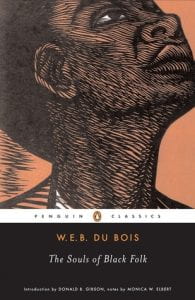 The Souls of Black Folk by W.E.B. Du Bois
The Souls of Black Folk by W.E.B. Du Bois
“This collection of essays by scholar-activist W. E. B. Du Bois is a masterpiece in the African American canon. Du Bois, arguably the most influential African American leader of the early twentieth century, offers insightful commentary on Black history, racism, and the struggles of Black Americans following emancipation. In his groundbreaking work, the author presciently writes that ‘the problem of the twentieth century is the problem of the color line,’ and offers powerful arguments for the absolute necessity of moral, social, political, and economic equality. These essays on the Black experience in America range from sociological studies of the African American community to illuminating discourses on religion and ‘Negro music,’ and remain essential reading. A new introduction by Jonathan Holloway explores Du Bois’s signature accomplishments while helping readers to better understand his writings in the context of his time as well as ours.”
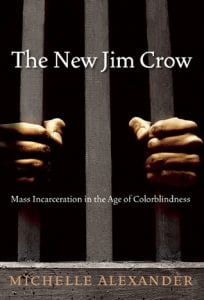 The New Jim Crow by Michelle Alexander
The New Jim Crow by Michelle Alexander
“Once in a great while a book comes along that changes the way we see the world and helps to fuel a nationwide social movement. The New Jim Crow is such a book. Praised by Harvard Law professor Lani Guinier as ‘brave and bold,’ this book directly challenges the notion that the election of Barack Obama signals a new era of colorblindness. With dazzling candor, legal scholar Michelle Alexander argues that ‘we have not ended racial caste in America; we have merely redesigned it.’ By targeting Black men through the War on Drugs and decimating communities of color, the U.S. criminal justice system functions as a contemporary system of racial control—relegating millions to a permanent second-class status—even as it formally adheres to the principle of colorblindness. In the words of Benjamin Todd Jealous, president and CEO of the NAACP, this book is a ‘call to action.’ Called ‘stunning’ by Pulitzer Prize-winning historian David Levering Lewis, ‘invaluable’ by the Daily Kos, ‘explosive’ by Kirkus, and ‘profoundly necessary’ by the Miami Herald, this updated and revised paperback edition of The New Jim Crow, now with a foreword by Cornel West, is a must-read for all people of conscience.”
 Black Feminist Thought: Knowledge, Consciousness, and the Politics of Empowerment by Patricia Hill Collins
Black Feminist Thought: Knowledge, Consciousness, and the Politics of Empowerment by Patricia Hill Collins
“In spite of the double burden of racial and gender discrimination, African-American women have developed a rich intellectual tradition that is not widely known. In Black Feminist Thought, Patricia Hill Collins explores the words and ideas of Black feminist intellectuals as well as those African-American women outside academe. She provides an interpretive framework for the work of such prominent Black feminist thinkers as Angela Davis, bell hooks, Alice Walker, and Audre Lorde. The result is a superbly crafted book that provides the first synthetic overview of Black feminist thought.”
 On Lynchings by Ida B. Wells-Barnett
On Lynchings by Ida B. Wells-Barnett
“Though the end of the Civil War brought legal emancipation to Blacks, it is a fact of history that their social oppression continued long after. The most virulent form of this ongoing persecution was the practice of lynching carried out by mob rule, often as local law enforcement officials looked the other way. During the 1880s and 1890s, more than 100 African Americans per year were lynched, and in 1892 alone the toll of murdered men and women reached a peak of 161.
In that awful year, the 23-year-old Ida B. Wells, the editor of a small newspaper for Blacks in Memphis, Tennessee, raised one lone voice of protest. In her paper, she charged that white businessmen had instigated three local lynchings against their black competitors. In retaliation for her outspoken courage, a goon-squad of angry whites destroyed her editorial office and print shop, and she was forced to flee the South and move to New York City. So began a crusade against lynching which became the focus of her long, active, and very courageous life. In New York, she began lecturing against the abhorrent vigilante practice and published her first pamphlet on the subject called ‘Southern Horrors.’ After moving to Chicago and marrying lawyer Ferdinand Barnett, she continued her campaign, publishing ‘A Red Record’ in 1895 and ‘Mob Rule in New Orleans,’ about the race riots in that city, in 1900. All three of these documents are collected in On Lynchings, a shocking testament to cruelty and the dark American legacy of racial prejudice.”
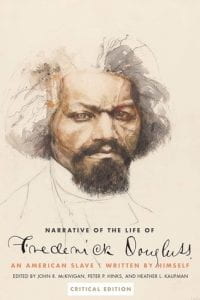 Narrative of the Life of Frederick Douglass, an American Slave: Written by Himself, Critical Edition
Narrative of the Life of Frederick Douglass, an American Slave: Written by Himself, Critical Edition
“A new edition of one of the most influential literary documents in American and African American history. Ideal for coursework in American and African American history, this revised edition of Frederick Douglass’s memoir of his life as a slave in pre-Civil War Maryland incorporates a wide range of supplemental materials to enhance students’ understanding of slavery, abolitionism, and the role of race in American society. Offering readers a new appreciation of Douglass’s world, it includes documents relating to the slave narrative genre and to the later career of an essential figure in the nineteenth-century abolition movement.”
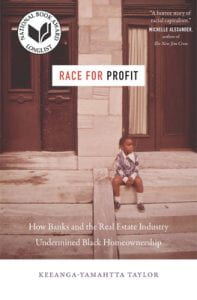 Race for Profit: How Banks and the Real Estate Industry Undermined Black Homeownership by Keeanga-Yamahtta Taylor
Race for Profit: How Banks and the Real Estate Industry Undermined Black Homeownership by Keeanga-Yamahtta Taylor
“By the late 1960s and early 1970s, reeling from a wave of urban uprisings, politicians finally worked to end the practice of redlining. Reasoning that the turbulence could be calmed by turning Black city-dwellers into homeowners, they passed the Housing and Urban Development Act of 1968, and set about establishing policies to induce mortgage lenders and the real estate industry to treat Black homebuyers equally. The disaster that ensued revealed that racist exclusion had not been eradicated, but rather transmuted into a new phenomenon of predatory inclusion. Race for Profit uncovers how exploitative real estate practices continued well after housing discrimination was banned. The same racist structures and individuals remained intact after redlining’s end, and close relationships between regulators and the industry created incentives to ignore improprieties. Meanwhile, new policies meant to encourage low-income homeownership created new methods to exploit Black homeowners. The federal government guaranteed urban mortgages in an attempt to overcome resistance to lending to Black buyers – as if unprofitability, rather than racism, was the cause of housing segregation. Bankers, investors, and real estate agents took advantage of the perverse incentives, targeting the Black women most likely to fail to keep up their home payments and slip into foreclosure, multiplying their profits. As a result, by the end of the 1970s, the nation’s first programs to encourage Black homeownership ended with tens of thousands of foreclosures in Black communities across the country. The push to uplift Black homeownership had descended into a goldmine for realtors and mortgage lenders, and a ready-made cudgel for the champions of deregulation to wield against government intervention of any kind. Narrating the story of a sea-change in housing policy and its dire impact on African Americans, Race for Profit reveals how the urban core was transformed into a new frontier of cynical extraction.”
 Black and Blue: The Origins and Consequences of Medical Racism by John Hoberman
Black and Blue: The Origins and Consequences of Medical Racism by John Hoberman
“Black and Blue is the first systematic description of how American doctors think about racial differences and how this kind of thinking affects the treatment of their black patients. The standard studies of medical racism examine past medical abuses of Black people and do not address the racially motivated thinking and behaviors of physicians practicing medicine today. Black and Blue penetrates the physician’s private sphere where racial fantasies and misinformation distort diagnoses and treatments. Doctors have always absorbed the racial stereotypes and folkloric beliefs about racial differences that permeate the general population. Within the world of medicine this racial folklore has infiltrated all of the medical sub-disciplines, from cardiology to gynecology to psychiatry. Doctors have thus imposed White or Black racial identities upon every organ system of the human body, along with racial interpretations of Black children, the Black elderly, the Black athlete, Black musicality, Black pain thresholds, and other aspects of Black minds and bodies. The American medical establishment does not readily absorb either historical or current information about medical racism. For this reason, racial enlightenment will not reach medical schools until the current race-aversive curricula include new historical and sociological perspectives.”
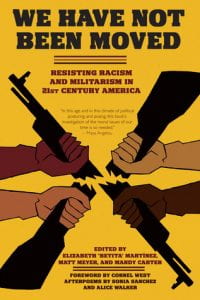 We Have Not Been Moved: Resisting Racism and Militarism in 21st Century America by Elizabeth Betita Martinez Matt Meyer Mandy Carter Alice Walker Sonia Sanchez Cornel West
We Have Not Been Moved: Resisting Racism and Militarism in 21st Century America by Elizabeth Betita Martinez Matt Meyer Mandy Carter Alice Walker Sonia Sanchez Cornel West
“A compendium of writings that detail the grassroots actions of social and political activists from the civil rights era of the early 1960s to the present day, this book reviews the major points of intersection between white supremacy and the war machine through historic and contemporary articles from a diverse range of scholars and activists. Among the historic texts included are rarely seen writings by antiracist icons such as Anne Braden, Barbara Deming, and Audre Lorde as well as a dialogue between Dr. King, revolutionary nationalist Robert F. Williams, Dave Dellinger, and Dorothy Day. Never-before-published pieces appear from civil rights and gay rights organizer Bayard Rustin and from celebrated U.S. pacifist supporter of Puerto Rican sovereignty Ruth Reynolds. Additional articles, essays, interviews, and poems from numerous contributors examine the strategic and tactical possibilities of radical transformation for lasting social change through revolutionary nonviolence.”
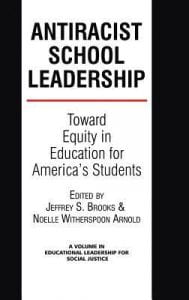 Antiracist School Leadership: Toward Equity in Education for America’s Students by Jeffrey S. Brooks
Antiracist School Leadership: Toward Equity in Education for America’s Students by Jeffrey S. Brooks
“Since the passing of Brown versus Board of Education to the election of the first Black president of the United States, there has been much discussion on how far we have come as a nation on issues of race. Some continue to assert that Barack Obama’s election ushered in a new era—making the US a post-racial society. But this argument is either a political contrivance, borne of ignorance or a bold-faced lie. There is no recent data on school inequities, or inequity in society for that matter, that suggests we have arrived at Dr. King’s dream that his ‘four children will one day live in a nation where they will not be judged by the color of their skin but by the content of their character.’ Children today are instead still judged by the color of their skin, and this inequitable practice is manifest in today’s schools for students of color in the form of disproportionate student discipline referrals, achievement and opportunity gaps, pushout rates, overrepresentation in special education and underrepresentation in advanced coursework, among other indicators (Brooks, 2012). Though issues of race in the public education system may take an overt or covert form; racial injustice in public schools is still pervasive, complex, and cumulative. The authors in this book explore various ways that racism is manifest in the American school system. Through a plurality of perspectives, they deconstruct, challenge, and reconstruct an educational leadership committed to equity and excellence for marginalized students and educators.”
 Towards Collective Liberation: Anti-Racist Organizing, Feminist Praxis, and Movement Building Strategy by Chris Crass
Towards Collective Liberation: Anti-Racist Organizing, Feminist Praxis, and Movement Building Strategy by Chris Crass
“Organized into four sections, this collection of essays is geared toward activists engaging with the dynamic questions of how to create and support effective movements for visionary systemic change. These essays and interviews present powerful lessons for transformative organizing. It offers a firsthand look at the challenges and the opportunities of antiracist work in white communities, feminist work with men, and bringing women of color feminism into the heart of social movements. Drawing on two decades of personal activist experience and case studies within these areas, Crass’s essays insightfully explore ways of transforming divisions of race, class, and gender into catalysts for powerful vision, strategy, and building movements in the United States today. This collection will inspire and empower anyone who is interested in implementing change through organizing.”
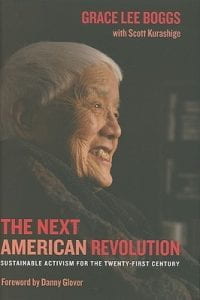 The Next American Revolution: Sustainable Activism for the Twenty-First Century by Grace Lee Boggs
The Next American Revolution: Sustainable Activism for the Twenty-First Century by Grace Lee Boggs
“The pioneering Asian American labor organizer and writer’s vision for intersectional and anti-racist activism. In this powerful, deeply humanistic book, Grace Lee Boggs, a legendary figure in the struggle for justice in America, shrewdly assesses the current crisis—political, economical, and environmental—and shows how to create the radical social change we need to confront new realities. A vibrant, inspirational force, Boggs has participated in all of the twentieth century’s major social movements—for civil rights, women’s rights, workers’rights, and more. She draws from seven decades of activist experience, and a rigorous commitment to critical thinking, to redefine “revolution” for our times. From her home in Detroit, she reveals how hope and creativity are overcoming despair and decay within the most devastated urban communities. Her book is a manifesto for creating alternative modes of work, politics, and human interaction that will collectively constitute the next American Revolution—which is unraveling before our eyes.”
We hope you find this eBook reading list helpful as you begin or continue your antiracist work. You can follow the JKM Library’s Instagram account (@jkmlibrary) for more book recommendations on various topics. And you can recommend a specific book to be added to the JKM Library’s collection by emailing Reference@Chatham.edu or reaching out to a specific librarian.

